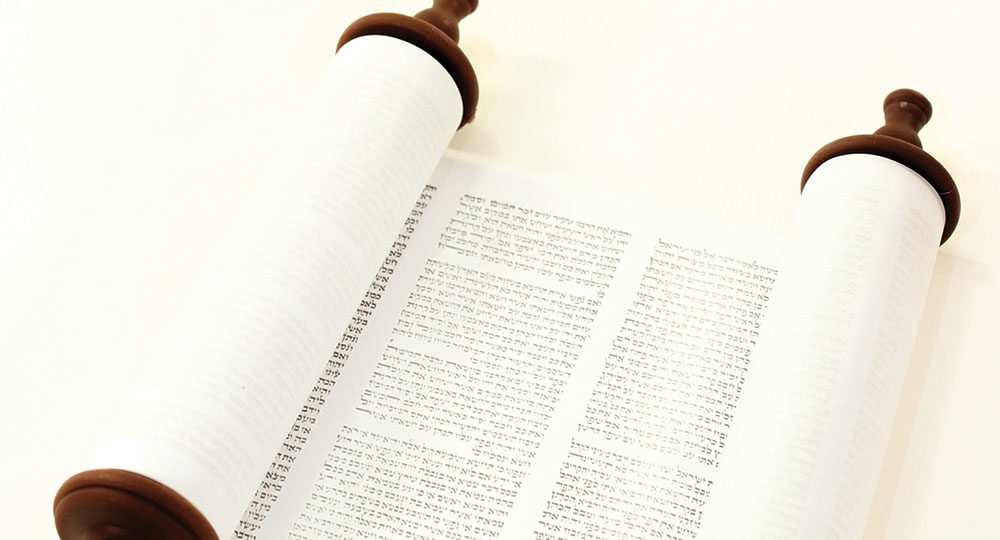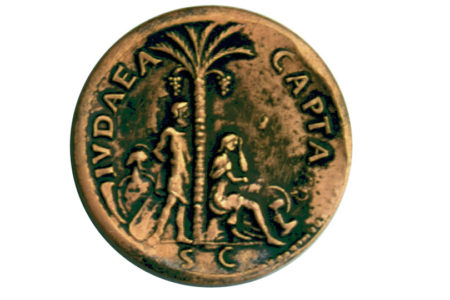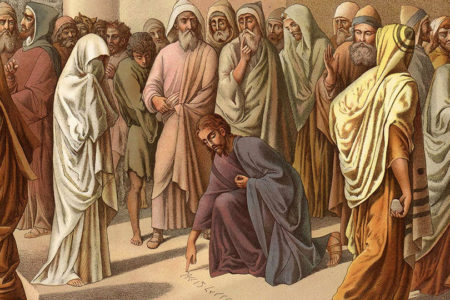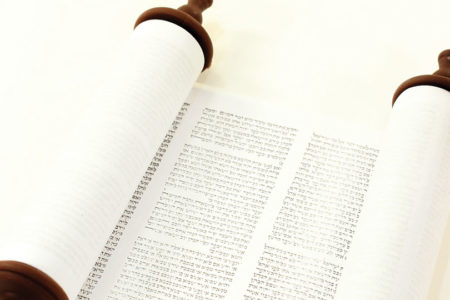The Apocrypha Apr/May 1997
The four hundred years between the prophecy of Malachi and the birth of Jesus, the Messiah, are frequently described as silent or mute years; however, they were full of activity. Although no inspired prophet appeared in Israel during those years, events occurred that gave Judaism its distinctive creed and proper preparation for the birth of Christ and the gospel message.
During this time frame the Pharisees, Sadducees, Herodians, and Zealots—who all played important parts in the four gospels—had their origins. They represented different reactions to the continuing clashes between Hellenism and Judaism. While the Maccabean struggle had settled the political problem between the Syrian Seleucids and Judea, it forced Judaism to determine its relationship with other nations.
Definition
The term Apocrypha (Gr., hidden) is a collection of ancient Jewish writings and is the title given to these books, which were written between 300 and 30 B.C., in the era between the Old and New Testaments. It contains, among other things, historical events of the Jewish people of that time.
In 1546 A.D., the Council of Trent declared these books to be authoritative Scripture; however, Protestant churches have never accepted them as part of the canon. The teachings of purgatory, prayers for the dead, and salvation by works are found in these books.
Why Protestants Reject the Apocrypha
Many Protestants study the Apocrypha for the light it sheds on the life and thought of pre-Christian Judaism. However, they reject it as inspired Scripture for several specific reasons.
First, the Apocryphal books were not a part of the Old Testament of Jesus and the early church. The three-fold division of the Old Testament—the Law, the Prophets, and the Writings—which is still used in the Hebrew Bible, does not include the Apocryphal books. Jesus and His disciples never quoted from it as authoritative Scripture.
Second, ancient Jewish writers who used the Greek Bible—notably Philo and Josephus—were acquainted with the Apocrypha but never quoted it as Scripture. In fact, Josephus stated that nothing has been added to Scripture from “Artaxerxes until our time.”
Third, church fathers who were familiar with the Hebrew canon clearly distinguished between canonical and Apocryphal writings. The writings of Melito of Sardis, Cyril of Jerusalem, and St. Jerome show a difference between the inspired Scriptures and the Apocrypha.
Fourth, the Apocryphal books were never declared to be authoritative Scripture until the Council of Trent. At that time the following books were declared canonical by the Catholic church: Tobit, Judith, the Wisdom of Solomon, Ecclesiasticus, Baruch (including the Letter of Jeremiah), First and Second Maccabees, the additions to Esther, and the additions to Daniel (Susanna, the Song of the Three Young Men, and Bel and the Dragon). Some Roman Catholic scholars today distinguish between proto-canonical books (the Old Testament) and Deuter-canonical books (the Apocrypha). First and Second Esdras (Ezra) are considered part of the Apocrypha; however, they are not found in the oldest Greek copies of the Septuagint (LXX) and are not even found in many collections of the Apocrypha. They are not frequently considered among the books of the Old Testament Pseudepigrapha (Jewish non-rabbinical religious writings not included in the Old Testament or Apocrypha).
Fifth, most scholars feel that the Apocryphal books represent a lower level of writing than that of the canonical Scriptures. They include many historical and geographical inaccuracies and teachings that are chronologically out of place and do not breathe the prophetic spirit so evident in canonical writings.
Sixth, the Westminster Confession (1643 A.D.) states, “The books commonly called Apocrypha, not being of divine inspiration, are not part of the canon of Scriptures, and therefore are of no authority in the church of God, or to be any otherwise approved or made use of than human writing.”
Apocryphal Books
The Jewish people were continually wondering what God was saying to them during their difficult times. Out of their experiences arose the books of the Apocrypha. The following brief descriptions provide some background for the books in the collection.
The individual Old Testament Apocrypha books are arranged in alphabetical order. The following listing shows the books as they are generally arranged in Bibles that contain the Apocrypha.
First Esdras: This is primarily an historical account of the return of the Jewish people from the Babylonian captivity and the reestablishment of the Temple and its worship. Its historical account is taken from 2 Chronicles 35:1; 36:23; Ezra 1:1–11, along with Nehemiah 7:73–8:12. It begins with the Passover celebration by King Josiah of Judah (640–609 B.C.). It discusses Josiah’s death in the battle of Megiddo and continues with the events leading up to the fall of Jerusalem and the deportation of the Jews to Babylon (586 B.C.)
Second Esdras: This book contains some visions and revelations of the early Jewish rabbis. It is helpful as a case history of Jewish thought and literature shortly before the time of Christ.
It was probably written during the same time period as the Book of the Revelation (ca. 96 A.D.) by a Palestinian Jew who was disillusioned over the destruction of the Temple in 70 A.D. He was puzzled by the evil in a world where God was supposed to be in control. This gloomy book is tied together with a thread of hope as deliverance for God’s people is assured. God is ultimately in control of history. His Word will never disappear.
Tobit: This is a narrative about good and evil spirits and teaches several lessons in morals. It is about Tobit, a Jew who was taken into captivity to Nineveh, the capital of Assyria, after the defeat of Israel in 722–721 B.C. Tobit was a strict observer of the Law who met with unfortunate circumstances. One night he was blinded when droppings from a swallow fell into his eyes. God heard the prayers of Tobit and another Jew, Sarah, who lived in Babylonia or Media. God sent His angel, Raphael, to help and save both Tobit and Sarah with the aid of Tobit’s son, Tobias. The story ends happily as Tobias marries Sarah and defeats a demon named Asmodeus. Order was reestablished in their lives.
Tobit was written to show the place of fasting and prayer in the lives of the faithful. It teaches that God uses His angels to help people during difficult times.
Judith: This book is a narrative of a pious woman who murdered the Assyrian General Holofernes. Its aim is to show God’s ability to deliver His people in dire circumstances. Judith was a wise and intelligent Jewish woman who was devoted to keeping the Law of Moses. The story takes place during the time when Holofernes was commander of the Assyrian army. He was about to destroy the Jewish inhabitants of the city of Bethulia when Judith came to the aid of her fellow Jews. The people prayed to God for help, allowing Him five days in which to help them or they would surrender. Judith went to the enemy camp, beheaded Holofernes, and took his head back to the Jews of the city. Terrified, the Assyrians fled and the Jews were saved.
The book of Judith appealed to Jews living during a time of discouragement and defeat. It was probably written during the Hasmonean Period (142–63 B.C.). Judith exemplified the importance of faithfulness to the Law of Moses and the power of God in the lives of His people.
The Additions to the Book of Esther: The Old Testament Book of Esther does not mention the name of God or any worship rituals. These Apocryphal additions were written to connect the book of Esther to the traditions of Israel’s faith in a more explicit way.
The Wisdom of Solomon: This is a collection of teachings in a system of moral philosophy, supposedly written in the style of Solomon to gain a wider readership. It reflects on the morality of the Book of Proverbs. Most scholars today do not believe that Solomon wrote it but that it was written by an Alexandrian Jew in the first century B.C. or A.D.
Ecclesiasticus: This book should not be confused with the Old Testament Book of Ecclesiastes. The Apocrypha book was written in Hebrew around 180 B.C. and was translated into Greek for the Alexandrian Jews. It deals with a wide variety of subjects from diet to domestic relationships. Ecclesiasticus upholds Israel’s traditions as a channel through which God’s Word is communicated. It indicates that a righteous person is rewarded by God, whereas a sinner will be punished.
Baruch: This book is attributed to the friend and scribe of Jeremiah. It offers encouragement to one in exile and is divided into three sections: a confession, a plea for mercy and pardon, and consolation and assurance.
The Letter of Jeremiah: The author of this letter, written around 300 B.C., is unknown. It is an impassioned sermon based on Jeremiah 11:10, in which Jeremiah showed the utter impotence of gods of wood, silver, and gold.
The Prayer of Azariah and The Song of the Three Young Men: The Prayer of Azariah was added to Daniel 3. It is the prayer spoken by Azariah from the fiery furnace. The Song of the Three Young Men tells of their change as they walked about in the flames.
Susanna: This book relates the story of two Israelite elders in Babylon who falsely accused Susanna of adultery because she resisted their advances while she was bathing. She was condemned, but Daniel obtained a retrial and exposed her accusers.
Bel and the Dragon: This contains one of the world’s oldest detective stories. Daniel plays detective to expose the priests of Bel for eating the food that they declared their god had eaten. The dragon was a serpent worshiped by the king until Daniel killed it by feeding it lumps of pitch, fat, and hair, thus exposing it as false.
The Prayer of Manasseh: This prayer is ascribed to King Manasseh of Judah, who, according to 2 Chronicles 33, was taken to Babylon, where he repented of the idolatry that had characterized the evil years of his reign. Some scholars believe that the prayer by Manasseh recorded in 2 Chronicles 33:19 is connected with this prayer.
The Books of the Maccabees: These two narratives contain much valuable historical matter about valiant priests, soldiers, and rulers of the Maccabean family. The first book is a history of the Jews from the beginning of the reign of Antiochus Epiphanes to the death of Simon Maccabeus. The second book begins its account just before the time of the first book and relates much of the same material. However, it contradicts some of the first book and has less historical authenticity. There are three other Books of Maccabees, but they have never been recognized as canonical, except the third by the Greek Orthodox Church.
Among the other Apocryphal writings are the Book of Jubilees (or the Little Genesis), the Book of Enoch, the Assumption of Moses, the Ascension of Isaiah, the Apocalypse of Baruch, the Sibylline Oracles, the Psalter of Solomon, and the Testament of the Twelve Patriarchs. None of these are canonical books, although they have been recognized as important because of their various points of view.






